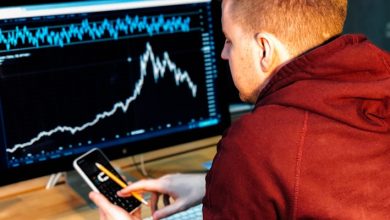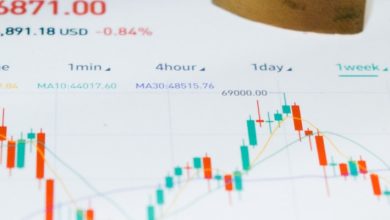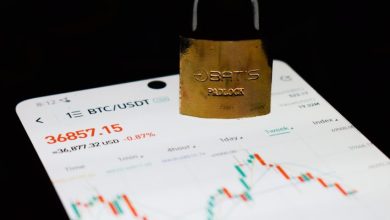How NFT Market Trends Are Influencing the Broader Crypto Space

- The Rise of Non-Fungible Tokens (NFTs) in the Crypto Market
- Exploring the Intersection of NFTs and Traditional Cryptocurrencies
- Impact of NFT Market Trends on Investor Behavior in the Crypto Space
- Analyzing the Role of NFTs in Shaping the Future of Digital Assets
- Challenges and Opportunities for NFTs in the Evolving Crypto Landscape
- How NFTs Are Reshaping the Perception of Value in the Cryptocurrency Industry
The Rise of Non-Fungible Tokens (NFTs) in the Crypto Market
NFTs, short for Non-Fungible Tokens, have been making waves in the crypto market recently. These unique digital assets are gaining popularity among collectors, artists, and investors alike. The rise of NFTs has brought a new level of excitement and innovation to the broader crypto space.
Unlike cryptocurrencies such as Bitcoin and Ethereum, which are fungible and can be exchanged on a one-to-one basis, NFTs are unique and cannot be replicated. This uniqueness is what makes NFTs so valuable and sought after. From digital art to virtual real estate, NFTs have opened up a whole new world of possibilities for creators and buyers.
The surge in NFT popularity can be attributed to several factors, including the growing interest in digital assets, the rise of online marketplaces, and the increasing use of blockchain technology. As more people discover the potential of NFTs, the demand for these digital collectibles continues to grow.
Exploring the Intersection of NFTs and Traditional Cryptocurrencies
The intersection of NFTs and traditional cryptocurrencies is an area that has been garnering increasing interest in the broader crypto space. NFTs, or non-fungible tokens, have gained popularity for their ability to represent ownership of unique digital assets, such as art, music, and virtual real estate. Traditional cryptocurrencies like Bitcoin and Ethereum have long been used for transactions and investments in the digital realm.
One way in which NFTs and traditional cryptocurrencies are intersecting is through the use of blockchain technology. Both NFTs and traditional cryptocurrencies rely on blockchain to create a secure and transparent ledger of transactions. This shared infrastructure has led to increased integration between the two markets, with some platforms allowing users to trade both NFTs and traditional cryptocurrencies in the same marketplace.
Another point of intersection between NFTs and traditional cryptocurrencies is the growing interest from investors and traders. While traditional cryptocurrencies have been the dominant force in the crypto space for many years, NFTs have emerged as a new and exciting investment opportunity. This has led to a diversification of portfolios, with some investors allocating funds to both NFTs and traditional cryptocurrencies to capitalize on the growing market trends.
Overall, the intersection of NFTs and traditional cryptocurrencies presents a unique opportunity for investors, traders, and enthusiasts to explore new ways of engaging with the crypto space. As the market continues to evolve, it will be interesting to see how these two markets continue to influence and shape each other in the future.
Impact of NFT Market Trends on Investor Behavior in the Crypto Space
The impact of NFT market trends on investor behavior in the broader crypto space is undeniable. As non-fungible tokens continue to gain popularity, investors are increasingly looking to diversify their portfolios and capitalize on this growing trend. NFTs offer a unique opportunity for investors to own digital assets that are one-of-a-kind, creating scarcity and exclusivity that can drive up their value.
Investors in the crypto space are closely monitoring NFT market trends to identify new investment opportunities and stay ahead of the curve. The volatility of the NFT market can present both risks and rewards for investors, as prices can fluctuate rapidly based on demand and market sentiment. However, savvy investors who are able to spot emerging trends and invest wisely stand to profit from this rapidly evolving market.
One key impact of NFT market trends on investor behavior is the shift towards more long-term investment strategies. While some investors may still engage in short-term trading of NFTs for quick profits, many are now taking a more strategic approach, holding onto their digital assets in anticipation of future value appreciation. This shift towards HODLing reflects a growing confidence in the long-term viability of NFTs as an asset class.
Analyzing the Role of NFTs in Shaping the Future of Digital Assets
NFTs have emerged as a revolutionary technology in the realm of digital assets, offering unique opportunities for creators, investors, and collectors alike. These non-fungible tokens have garnered significant attention in recent years due to their ability to represent ownership of digital content in a secure and transparent manner.
One of the key aspects of NFTs that sets them apart from traditional cryptocurrencies is their ability to tokenize real-world assets such as art, music, videos, and even virtual real estate. This has opened up a whole new world of possibilities for creators looking to monetize their work and for investors seeking to diversify their portfolios.
As NFT market trends continue to evolve, they are increasingly influencing the broader crypto space in several ways. For starters, the growing popularity of NFTs is driving up demand for cryptocurrencies, as investors need digital assets to purchase these tokens. This has led to increased trading volumes and liquidity in the crypto market as a whole.
Moreover, the rise of NFTs has sparked innovation in the blockchain space, with developers exploring new use cases for this technology beyond digital collectibles. For example, NFTs are being used to tokenize real-world assets such as real estate and intellectual property, creating new opportunities for asset tokenization and fractional ownership.
Overall, NFTs are playing a crucial role in shaping the future of digital assets, offering a glimpse into the potential of blockchain technology to revolutionize the way we create, own, and exchange value in the digital world.
Challenges and Opportunities for NFTs in the Evolving Crypto Landscape
As the NFT market continues to grow and influence the broader crypto space, it is important to consider the challenges and opportunities that come with this evolving landscape.
One challenge that NFTs face is the issue of scalability. As more artists, creators, and investors enter the market, the demand for NFTs has skyrocketed, putting a strain on the existing infrastructure of blockchain networks. Scalability solutions such as layer 2 protocols and sidechains are being developed to address this issue and ensure the smooth functioning of the NFT market.
Another challenge is the environmental impact of NFTs. The energy consumption of minting and trading NFTs has raised concerns about the carbon footprint of blockchain technology. Initiatives like carbon offset programs and the development of eco-friendly blockchains are being explored to mitigate this issue and make NFTs more sustainable in the long run.
Despite these challenges, there are also numerous opportunities for NFTs in the evolving crypto landscape. NFTs have the potential to revolutionize the way digital assets are bought, sold, and owned. They can democratize access to art, music, and other creative content, allowing creators to connect directly with their audience and monetize their work in new and innovative ways.
Furthermore, NFTs can be used to represent ownership of physical assets, tokenize real estate, and even create new forms of decentralized governance. The versatility and flexibility of NFTs make them a powerful tool for unlocking value across a wide range of industries and use cases.
How NFTs Are Reshaping the Perception of Value in the Cryptocurrency Industry
NFTs, or non-fungible tokens, have been making waves in the cryptocurrency industry by reshaping how value is perceived. Unlike traditional cryptocurrencies like Bitcoin or Ethereum, NFTs are unique digital assets that represent ownership of a specific item or piece of content. This uniqueness is what sets NFTs apart and has led to a shift in how value is determined within the broader crypto space.
One of the key ways in which NFTs are influencing the perception of value is through the concept of scarcity. Because each NFT is one-of-a-kind, there is a limited supply of each token, which inherently increases its value. This scarcity factor has created a sense of exclusivity around NFTs, making them highly sought after by collectors and investors alike.
Another factor contributing to the changing perception of value within the cryptocurrency industry is the ability to attach real-world assets to NFTs. This means that NFTs can represent ownership of tangible items such as art, music, or even virtual real estate. By bridging the gap between the digital and physical worlds, NFTs are expanding the possibilities for what can be considered valuable within the crypto space.





